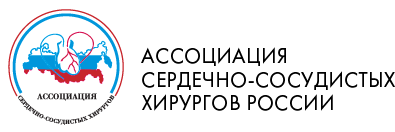Добро пожаловать на сайт научно-практического журнала "Анналы аритмологии"
Электрическая изоляция ушка левого предсердия в хирургическом лечении фибрилляции предсердий
Год. Том - Выпуск (Year. Volume - Issue):
Рубрика:
Тип статьи:
Резюме:
За последнее десятилетие существенно изменились методы и технологии лечения фибрилляции предсердий (ФП). Совершенствование техники выполнения хирургических пособий позволило значительно улучшить результаты хирургического и интервенционного лечения аритмии с учетом патофизиологических особенностей ее возникновения, основанных на механизмах макрориентри и эктопической триггерной активности.
Несмотря на то что катетерная аблация легочных вен при пароксизмальной форме ФП является эффективной, оптимальная тактика хирургического лечения при персистирующей форме ФП все еще не определена. Изоляция легочных вен при персистирующей форме ФП часто приводит к рецидиву аритмии, и даже после нескольких процедур вероятность успеха может оказаться низкой. Риск рецидива ФП может быть вторичным по отношению к триггерам, находящимся вне легочных вен, и в настоящее время изучаются дополнительные методы лечения для более действенного контроля персистирующей формы ФП.
Ушко левого предсердия (ЛП) представляет собой сложную структуру с определенными электрофизиологическими свойствами. Многочисленные исследования показали, что ушко ЛП является потенциальным субстратом для возникновения ФП. Терапия, направленная на электрическую изоляцию ушка ЛП, оказалась потенциально эффективной для устранения ФП. Общая концепция этой терапии состоит в том, чтобы провести электрическую изоляцию предсердия от ушка при помощи катетерной аблации, хирургического иссечения или лигирования, а также чрескожного лигирования ушка ЛП. Электрическая изоляция ушка ЛП имеет преимущества в снижении частоты рецидивов ФП и может стать основой оптимального контроля над ритмом при ФП, что, несомненно, требует дальнейшего исследования и является предметом обсуждения в настоящей статье.
Ключевые слова:
Цитировать как:
Бокерия Л.А., Бокерия О.Л., Биниашвили М.Б., Ле Т.Г. Электрическая изоляция ушка левого предсердия в хирургическом лечении фибрилляции предсердий. Анналы аритмологии. 2021; 18(1): 4-14.
Страницы (Pages):
4-14
PDF-файл:





